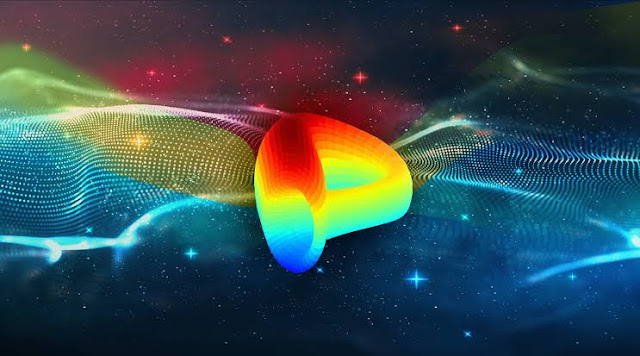Curve (CRV)
What Is Curve (CRV)?
Curve is a decentralized exchange for stablecoins that uses an automated market maker (AMM) to manage liquidity.
Launched in January 2020, Curve is now synonymous with the decentralized finance (DeFi) phenomenon, and has seen significant growth in the second half of 2020.
In August, Curve launched a decentralized autonomous organization (DAO), with CRV as its in-house token. The DAO uses Ethereum-based creation tool Aragon to connect multiple smart contracts used for users’ deposited liquidity. Issues such as governance, however, differ from Aragon in their weighting and other respects.
Who Are the Founders of Curve?
The founder and CEO of Curve is Michael Egorov, a Russian scientist who has various experience with cryptocurrency-related enterprises.
In 2015, he co-founded and became CTO of NuCypher, a cryptocurrency business building privacy-preserving infrastructure and protocols.
Egorov is also the founder of decentralized bank and loans network LoanCoin.
Curve’s regular team is part of the CRV allocation structure, and will receive tokens according to a two-year vesting schedule as part of the initial launch plan.
In August 2020, Egorov said that he “overreacted” by locking up a large amount of CRV tokens as a response to yearn.finance’s voting power, awarding himself 71% of governance in the process.
What Makes Curve Unique?
Curve has gained considerable attention by following its remit as an AMM specifically for stablecoin trading.
The launch of the DAO and CRV token brought in further profitability, given CRV’s use for governance, as it is awarded to users based on liquidity commitment and length of ownership.
The explosion in DeFi trading has ensured Curve’s longevity, with AMMs turning over huge amounts of liquidity and associated user profits.
As such, Curve caters to anyone involved in DeFi activities such as yield farming and liquidity mining, as well as those looking to maximize returns without risk by holding notionally non-volatile stablecoins.
The platform makes money by charging a modest fee which is paid to liquidity providers.
How Is the Curve Network Secured?
Curve carries the standard risks associated with depositing funds in smart contracts and dealing with AMMs, namely impermanent loss.
As Curve only supports stablecoins, the risk of markets moving too quickly is reduced, but users can still lose money once markets are rebalanced to reflect cross-market prices.
Curve has been audited, but this does not do anything to counter the risks involved in being exposed to a specific cryptocurrency.
How does Curve work?
Curve’s trading platform is governed by a mathematical feature that’s designed to let stablecoins trade for one another at the best possible price. This feature is known as a bonding curve.
Bonding curves are employed by other DeFi cryptocurrencies, like the decentralized exchange Uniswap for example. But unlike Uniswap’s bonding curve, which is focused on serving a great variety of cryptocurrencies, Curve’s bonding curve is focused only on stablecoins.
In practice, this means that Curve’s bonding curve allows larger amounts of stablecoins to be traded with less change in their relative prices.
Lending Pools
- Curve doesn’t just need traders to operate, however. Crucially, it also requires a group of users who will lock up cryptocurrencies so they can be traded by others.
- Curve keeps these coins in certain ratios to one another, so that as their amounts fluctuate, they become cheaper or more expensive, thus attracting traders to buy or sell them.
- In order to attract users to lock their coins in the first place, Curve offers them a return on their coins, as well as a proportion of the fee from trades.
- This return is generated when Curve supplies the locked funds to protocols like Compound or yEarn, which in turn lend the coins out to users.
Governance
- In 2020, the Curve platform issued its native token, called CRV. At this time, some 3 billion CRV tokens were generated.
- Roughly 60% of CRV tokens were allocated to users who had locked coins on the platform, while 30% was reserved for the Curve team and investors. The remainder was set aside for employees of the project and for a reserve for community initiatives.
- Today, 2 million CRV tokens are released daily, which means 750 million are issued annually. The tokens will be used to vote on proposals that set the rules of the Curve system.
Why does CRV have value?
As it will be needed to vote on decisions governing the platform, the CRV token may prove essential for users who want to ensure Curve’s proper management.
As mentioned, anyone who owns CRV tokens will one day be able to vote on proposals that impact all users of the platform. These votes favor those who have held CRV tokens the longest, meaning loyal holders of the token get more say.
CRV holders are also expected to be able to determine which types of locked assets should be promoted, how users who lock coins on the platform will get rewarded and whether CRV tokens should be eliminated from the economy (thus potentially raising their price).
Curve’s early popularity among DeFi platforms suggests that users locking funds in the platform may continue to enjoy exposure to the fees it generates. This in turn helps them earn more CRV from the platform, therefore increasing the demand for CRV tokens.
Tags:
Cryptocurrency
